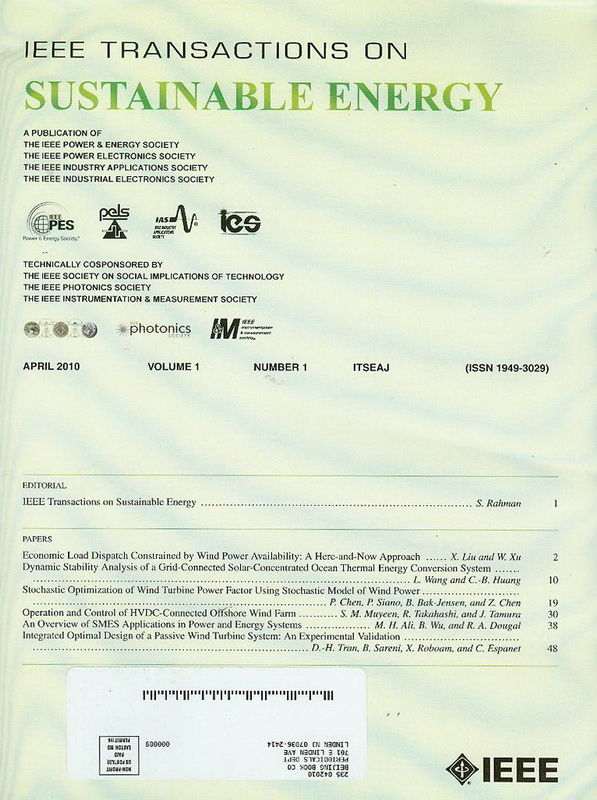Enhancing Fault Ride-Through Capability of DFIG-Based WECS Using Dynamic Reconfiguration Hybrid Interlinking Transformer Technique
IF 8.6
1区 工程技术
Q1 ENERGY & FUELS
引用次数: 0
Abstract
The abnormal grid voltages, such as sags, swells, and harmonics caused by grid faults, seriously threaten the safe operation of a doubly-fed induction generator (DFIG)-based wind energy conversion system (WECS). To enhance the fault ride-through (FRT) capability of DFIG and improve the converter capacity utilization, this paper proposes a novel DFIG-based WECS using a dynamic reconfiguration hybrid interlinking transformer (DR-HIT) technique for performance improvement under grid faults. Multiple operating modes and flexible switching strategies were developed based on the analysis of the proposed topology and principles. The proposed DR-HIT approach smooths the DFIG ’s output power fluctuations through the cooperative control of the multifunctional converter (MFC) and grid-side converter (GSC) in shunt mode when the grid voltage is stable. Upon the occurrence of a grid voltage fault, the DR-HIT flexibly switches from shunt mode to series mode, maintaining the terminal voltage at a constant value. Additionally, once grid voltage recovers, the DR-HIT reverts flexibly to its shunt mode. Finally, simulations and experimental results demonstrate that the proposed scheme can achieve accurate control of the system and flexible switching between different modes.电网故障引起的骤降、骤升和谐波等异常电网电压严重威胁着基于双馈异步发电机(DFIG)的风能转换系统(WECS)的安全运行。为了增强 DFIG 的故障穿越(FRT)能力并提高变流器容量利用率,本文提出了一种新型的基于 DFIG 的风能转换系统,该系统采用动态重构混合互联变压器(DR-HIT)技术来提高电网故障下的性能。基于对所提出的拓扑结构和原理的分析,开发了多种运行模式和灵活的开关策略。当电网电压稳定时,所提出的 DR-HIT 方法通过多功能变流器(MFC)和并联模式下的电网侧变流器(GSC)的协同控制来平滑 DFIG 的输出功率波动。当电网电压发生故障时,DR-HIT 会灵活地从并联模式切换到串联模式,将终端电压保持在恒定值。此外,一旦电网电压恢复,DR-HIT 会灵活地恢复到并联模式。最后,模拟和实验结果表明,所提出的方案可以实现对系统的精确控制和不同模式之间的灵活切换。
本文章由计算机程序翻译,如有差异,请以英文原文为准。
求助全文
约1分钟内获得全文
求助全文
来源期刊

IEEE Transactions on Sustainable Energy
ENERGY & FUELS-ENGINEERING, ELECTRICAL & ELECTRONIC
CiteScore
21.40
自引率
5.70%
发文量
215
审稿时长
5 months
期刊介绍:
The IEEE Transactions on Sustainable Energy serves as a pivotal platform for sharing groundbreaking research findings on sustainable energy systems, with a focus on their seamless integration into power transmission and/or distribution grids. The journal showcases original research spanning the design, implementation, grid-integration, and control of sustainable energy technologies and systems. Additionally, the Transactions warmly welcomes manuscripts addressing the design, implementation, and evaluation of power systems influenced by sustainable energy systems and devices.
 求助内容:
求助内容: 应助结果提醒方式:
应助结果提醒方式:


